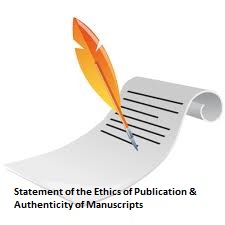The Effect of Maceration and Ultrasonic Extraction Methods on the Antioxidant Activity of Beluntas Leaves (Pluchea indica L.)
DOI:
https://doi.org/10.36341/jops.v8i1.5324Keywords:
Key words : beluntas leaves, antioxidant, maceration, ultrasonicAbstract
The antioxidant activity of the ethanol extract of beluntas leaves (Pluchea indica L.) was tested using the DPPH (1,1-diphenyl-2-picrylhydrazyl) method. This method is simple, easy to use and short in time. Several plants have used the ultrasonic extraction method for a short time and produced a higher yield than the maceration method. The aim of this research was to determine the effect of extraction methods on the antioxidant activity of beluntas leaves (Pluchea indica L.). This research method is an experimental method that uses beluntas leaves (Pluchea indica L.), extracted using the maceration method for 24 hours and ultrasonics for 30 minutes, 60 minutes. The extraction results were measured for their antioxidant activity using a UV-Vis Spectrophotometer. The results showed that extraction of beluntas leaves (Pluchea indica L.) using the maceration method produced an IC50 of 79.99 μg/ml and sonication for 60 minutes produced an IC50 of 54.29 ug/ml, including the strong category, while the ultrasonic method for 30 minutes produced an IC50 of 48.81 ug/ml. ml is in the very strong category. The conclusion of this research is that the ultrasonic extraction method produces higher antioxidant activity than the maceration method.
Downloads
Downloads
Published
How to Cite
Issue
Section
License
1. Copyright of all journal manuscripts is held by the JOPS (Journal Of Pharmacy and Science)
2. Formal legal provisions to access digital articles of electronic journal are subject to the provision of the Creative Commons Attribution-ShareAlike license (CC BY-NC-SA), which means that JOPS (Journal Of Pharmacy and Science) is rightful to keep, transfer media/format, manage in the form of databases, maintain, and publish articles.
3. Published manuscripts both printed and electronic are open access for educational, research, and library purposes. Additiponally, the editorial board is not responsible for any violations of copyright law.
licensed under a Creative Commons Attribution-ShareAlike 4.0 International License.










